Nagoya Castle
Introduction of Various Rooms
Genkan, Entrance Hall
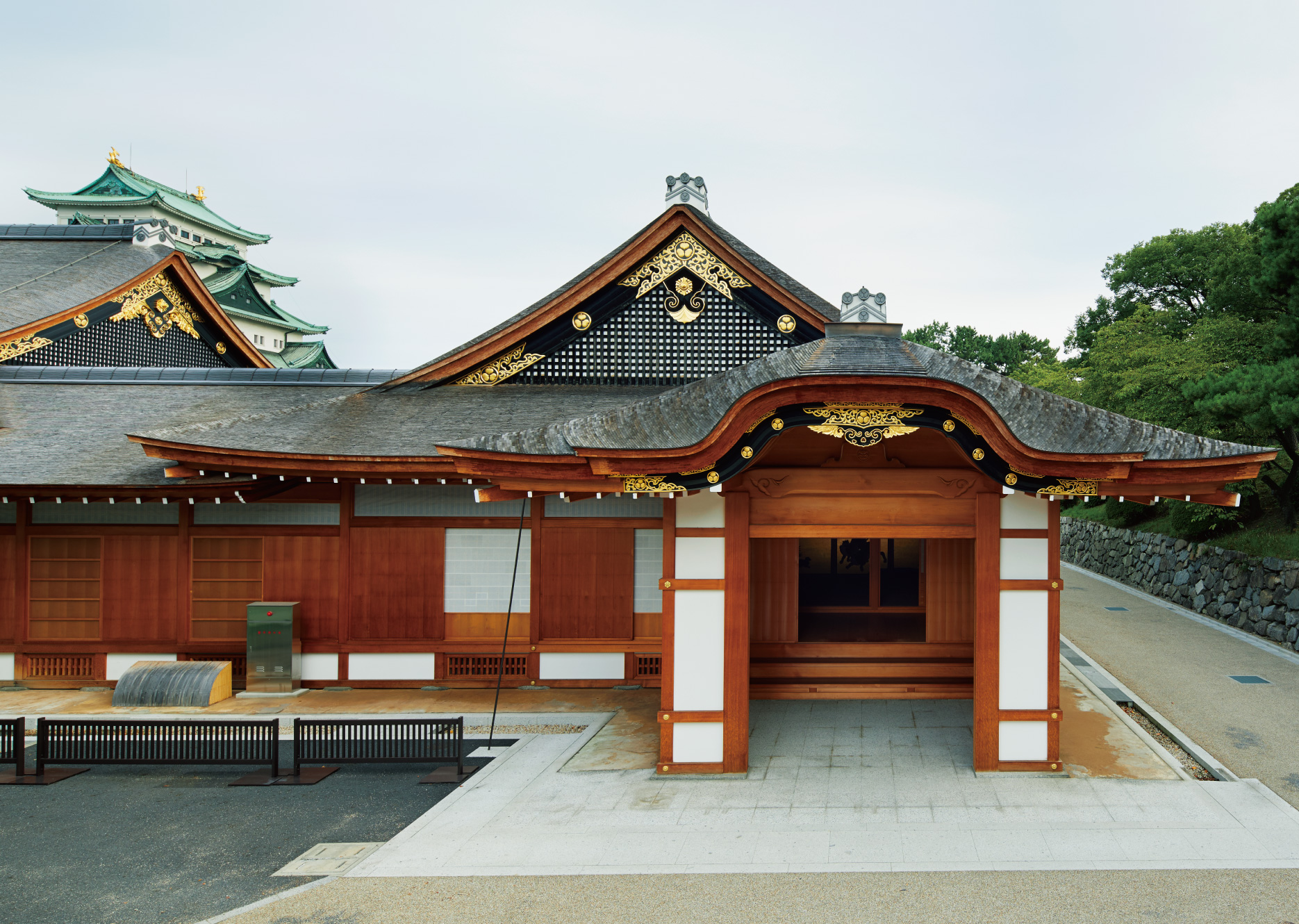
Visitors and guests would enter the Hommaru Palace via this covered formal entrance and wait to be received for formal audiences. Through the entrance are rooms featuring walls and sliding screen doors decorated with art works of ferocious looking tigers and leopards on gold leaf, and so the rooms were also known as the "Tiger Rooms".
Omote Shoin, Main Hall
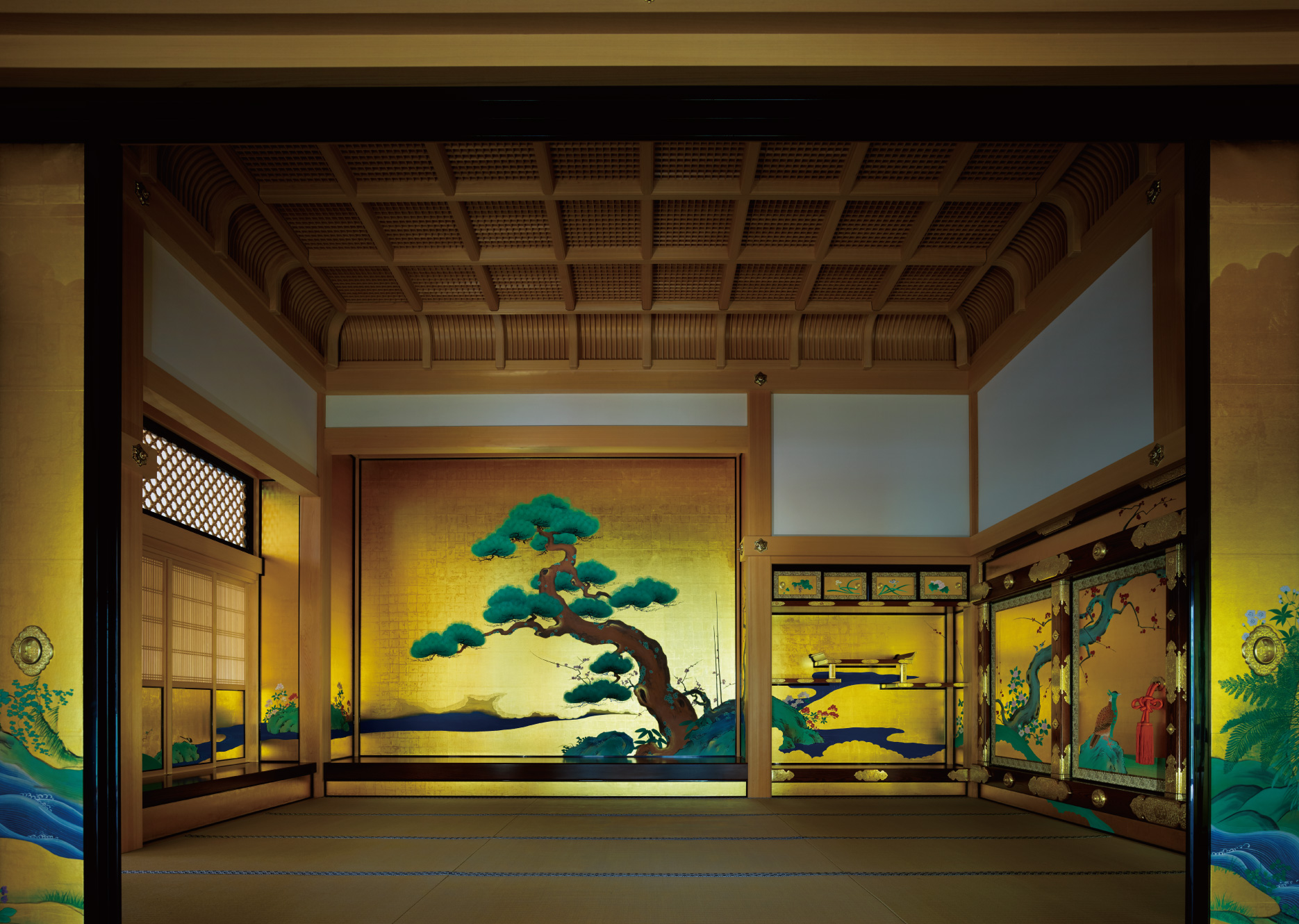
When completed in 1615, this room, ostensibly the largest and grandest of all rooms, was the lords' official study and audience chamber. This room, used by the first lord, Tokugawa Yoshinao, is gorgeously decorated with brilliant colors on gold leaf.
Taimenjo, Reception Hall
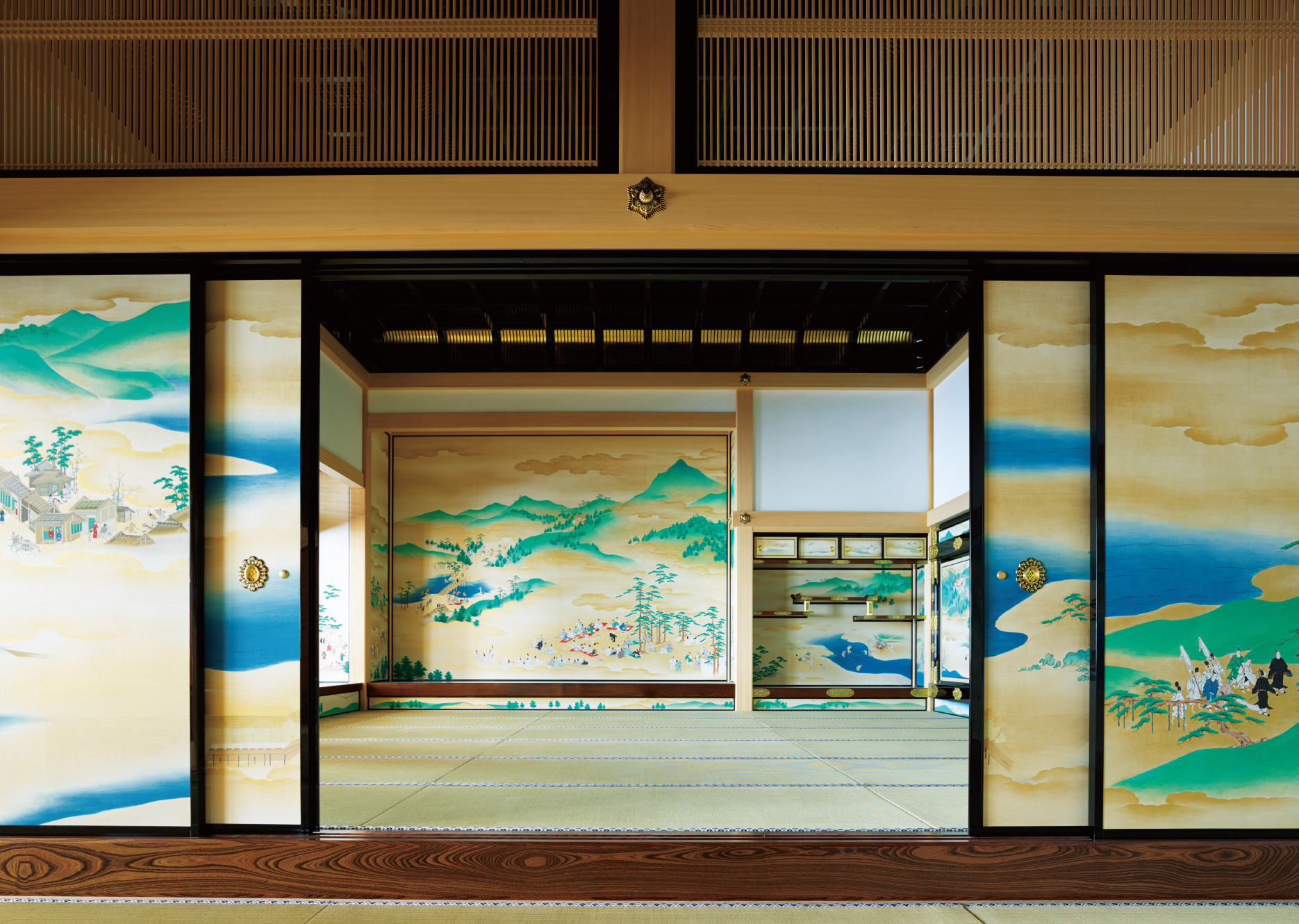
Jodan-no-ma, Lord's Audience Chamber
Used by the lord for private functions, audiences with his ministers and vassals, as well as for banquets. The room's walls and sliding screen doors are decorated with art depicting the four seasons in Kyoto and Wakayama Prefecture, and the customs of the townsfolk. The luxurious lacquer and gold leaf ceiling is another highlight.
Jorakuden, Shogun Accomodation Facilities
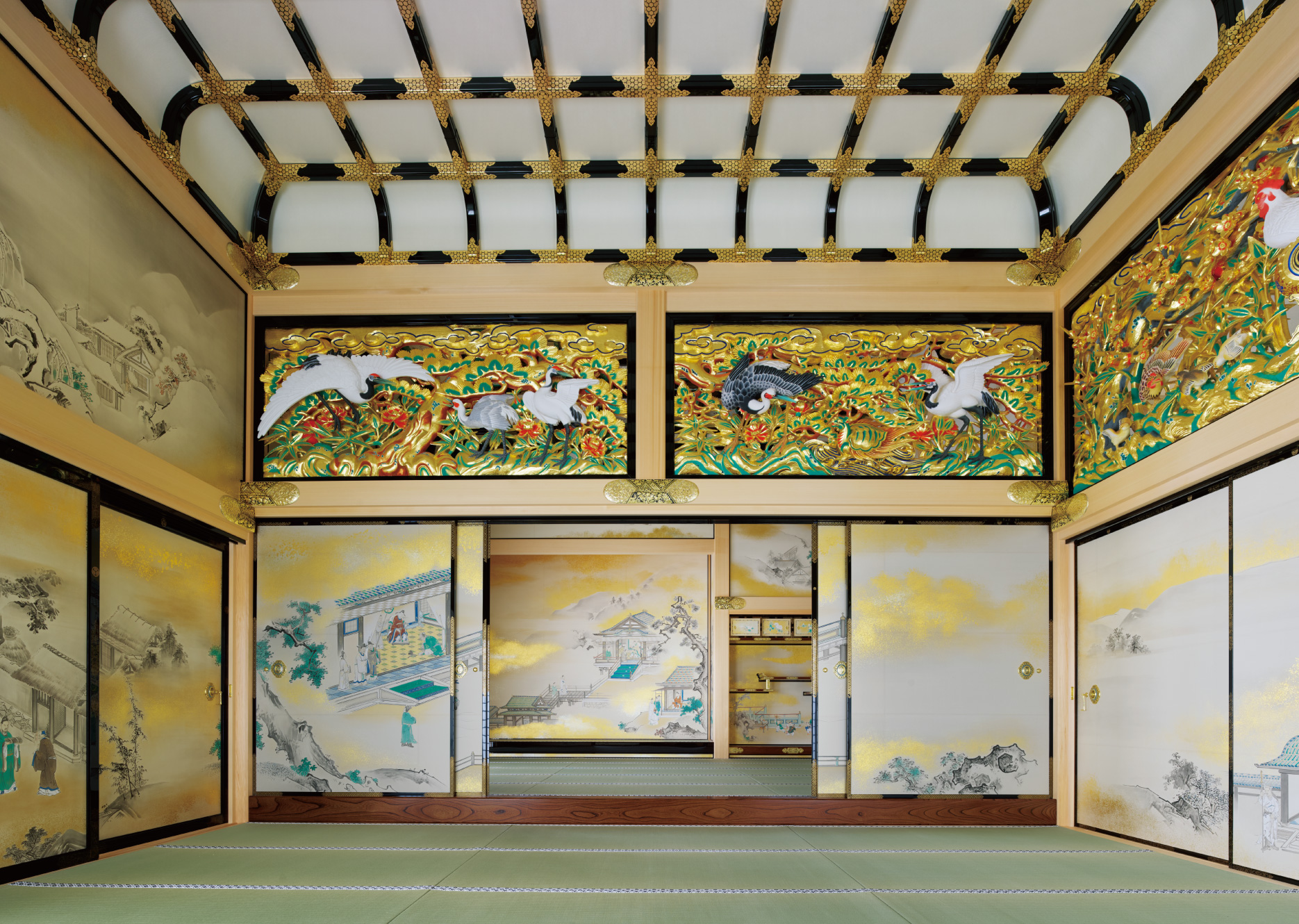
Jodan-no-ma, Lord's Audience Chamber
The most gorgeous and luxurious of all rooms within the Hommaru Palace, the Ichi-no-ma, Jodan-no-ma was constructed on the occasion of the third Shogun, Tokugawa Iemitsu's visit. The highest quality interior metalworks and art works were produced by the finest artists of the Edo period (1603-1867), particularly those of the famed Kano School.
Yudono Shoin, Bathing Room
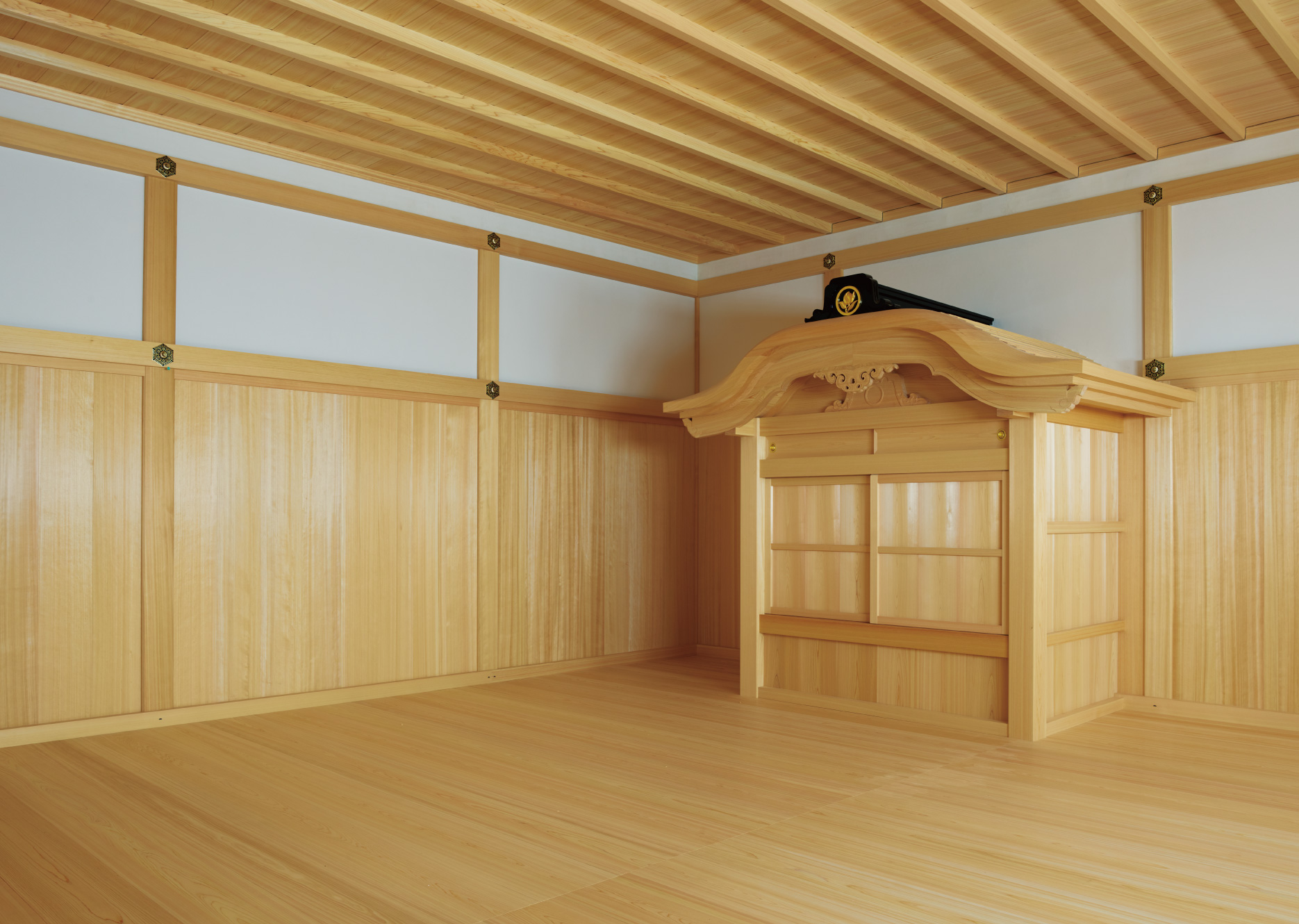
Private bathroom facilities built solely for the Shogun's visit. Instead of a tub, it featured a sauna-like steam bath, fed by an external boiler.
Kuroki Shoin, Inner Reception Hall
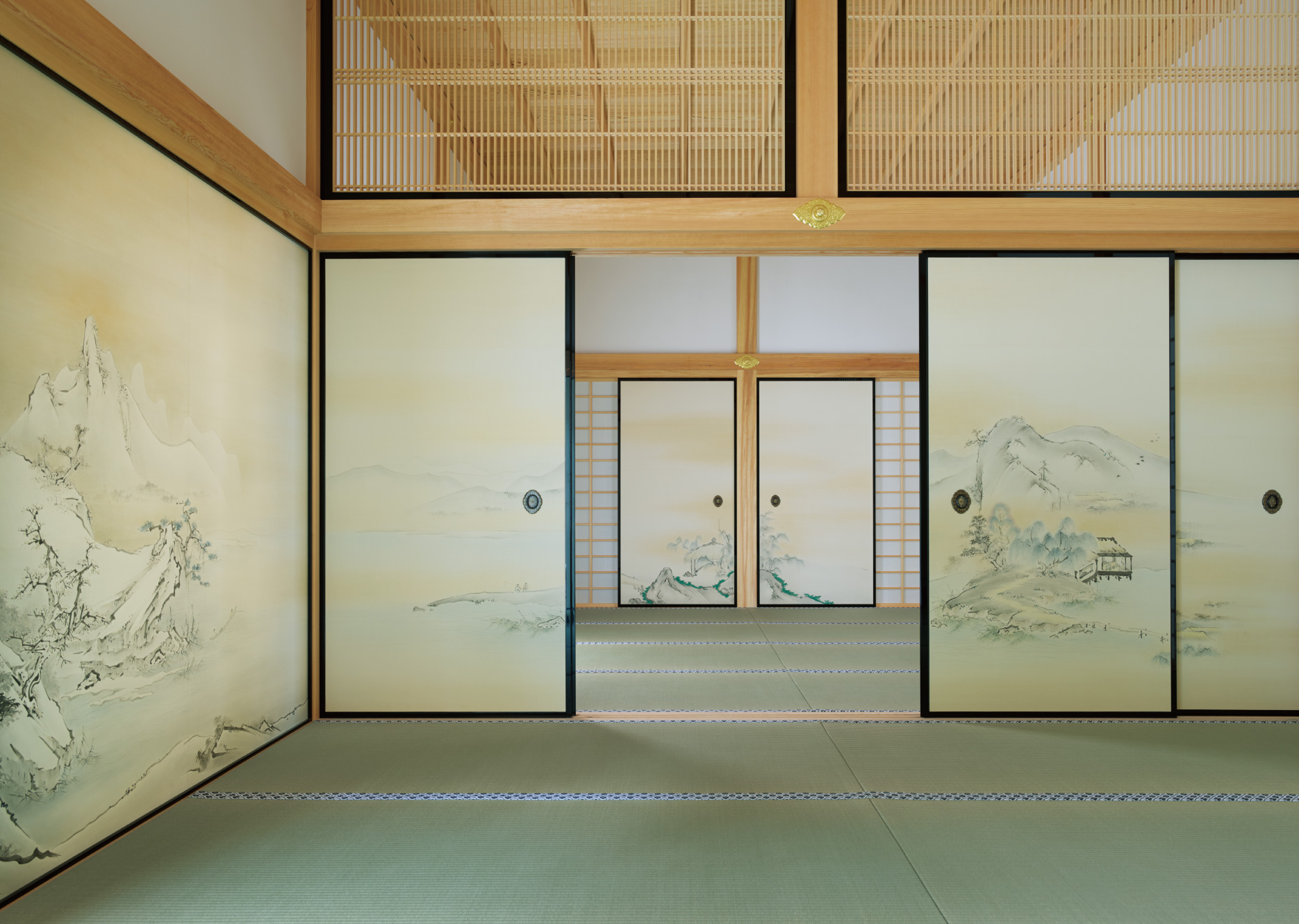
While the majority of the Hommaru Palace is built from cypress wood, high quality pine wood, said to have been the timber from Ieyasu's residence at Kiyosu Castle, was used in the Kuroki Shoin.








